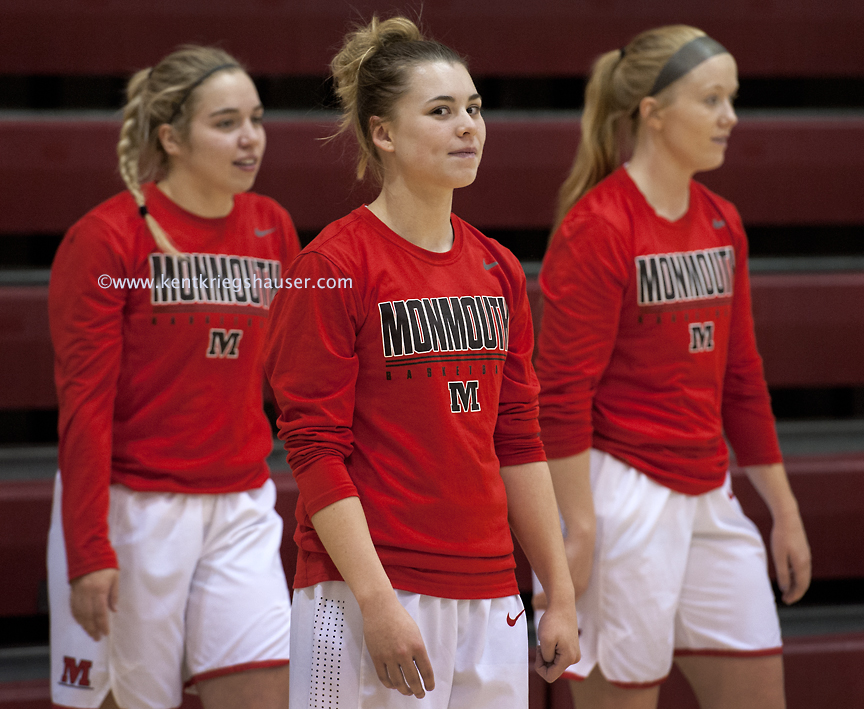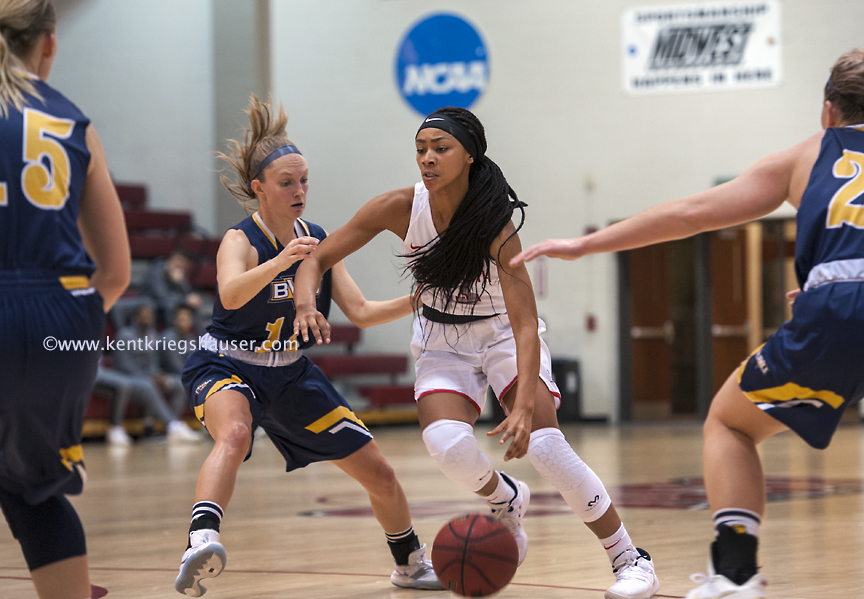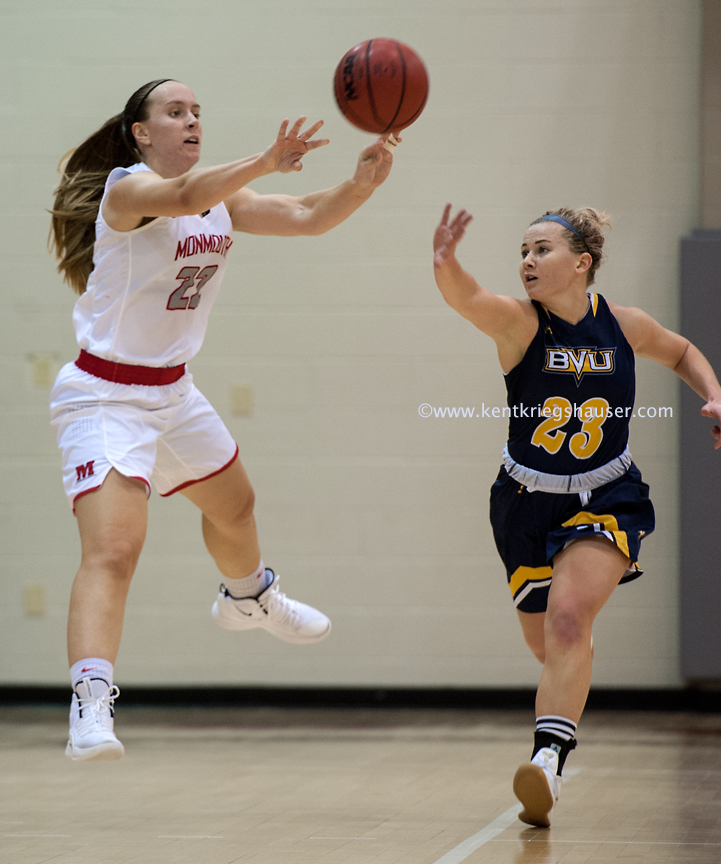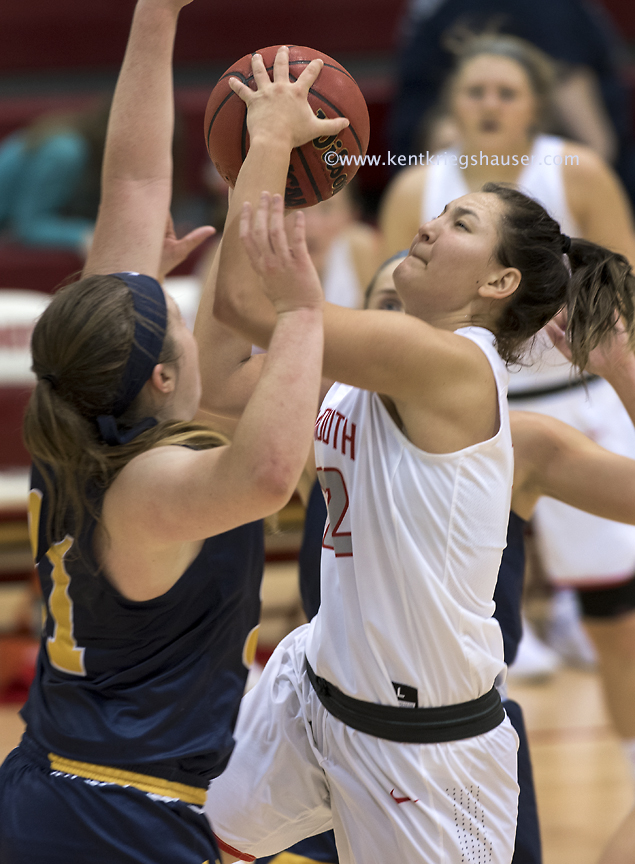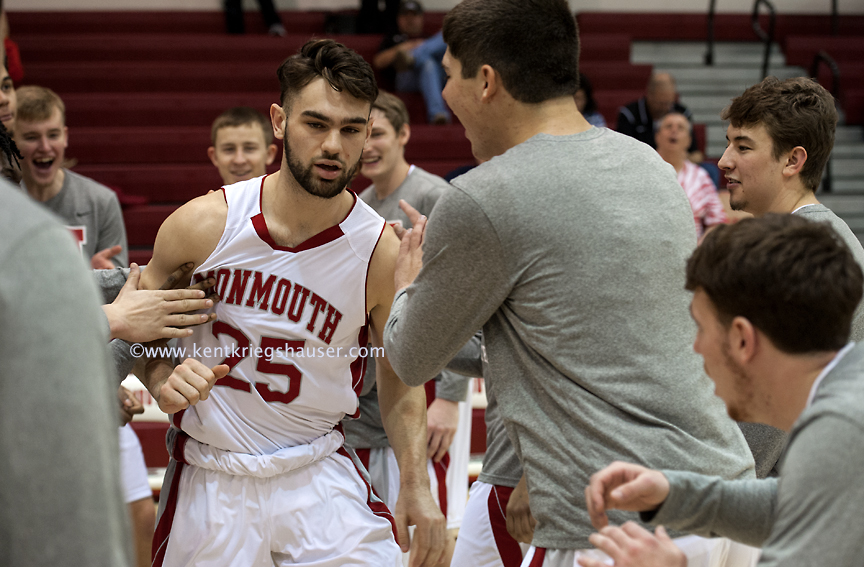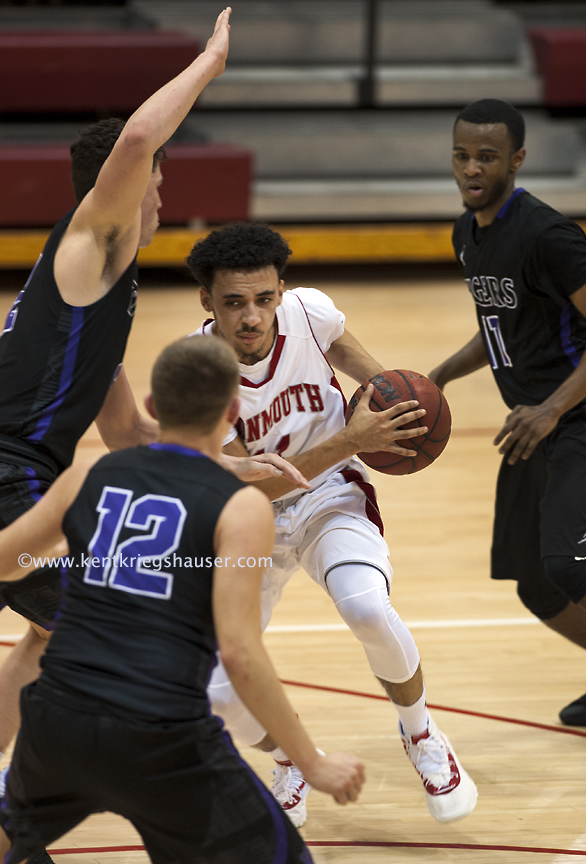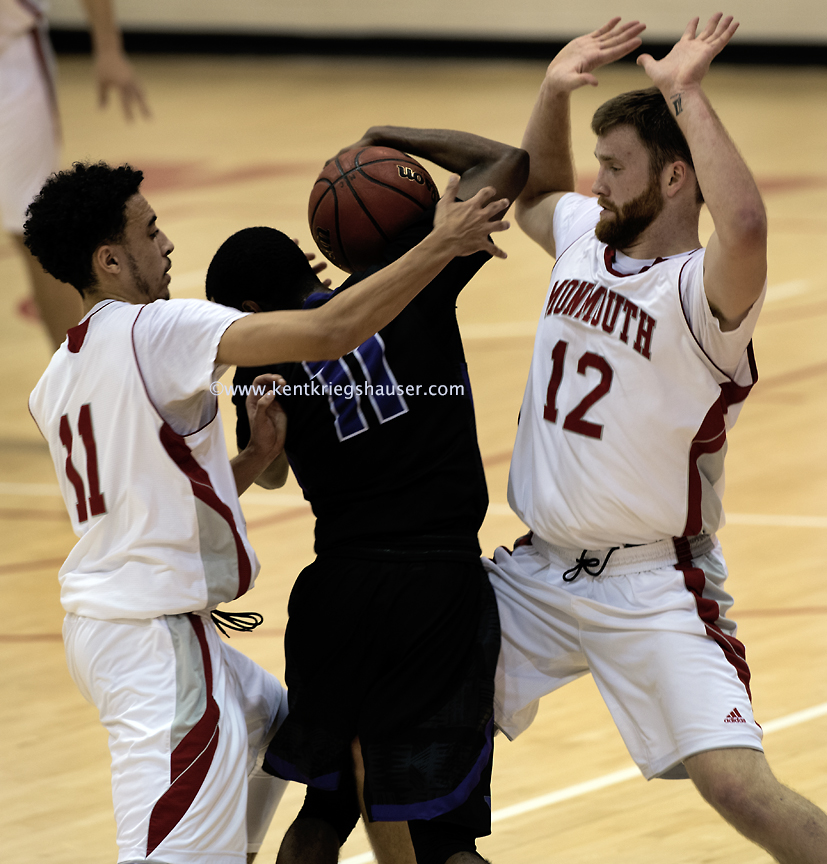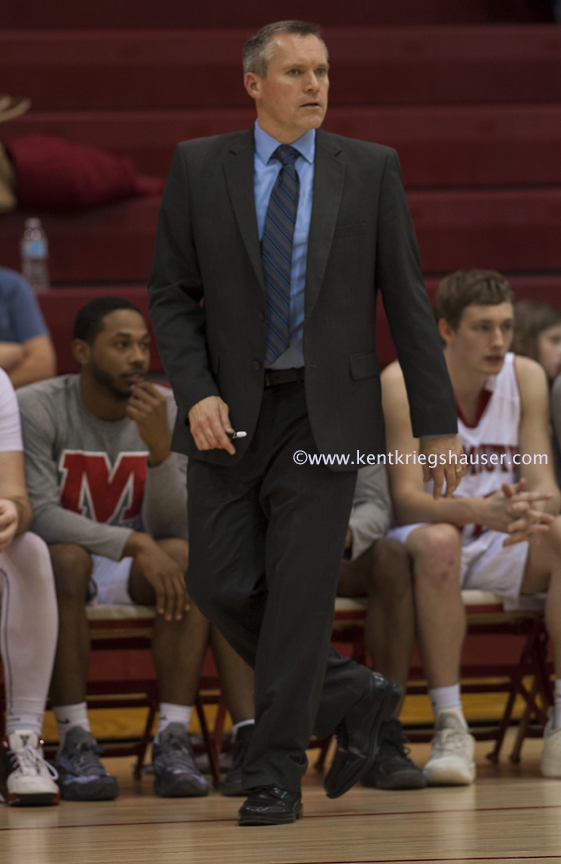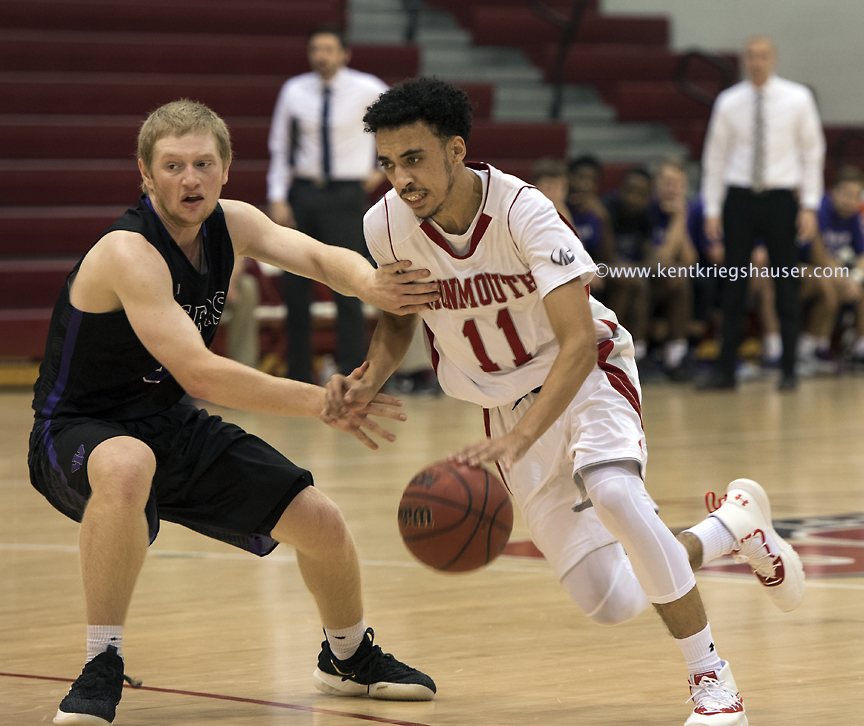Saturday, November 24 marked the first time this season, to photograph basketball, or “hoops,” as we sometimes shorten it. I worked two games for my friends at Monmouth College. The ladies played Buena Vista College and won. The men came up just short against Iowa Wesleyan.
Basketball is not all that difficult to photograph. There is near constant motion. Plenty of chances to get “something,” whereas baseball and football usually have key or decisive moments. With basketball, one just hopes that something different may happen, and that one is in the correct position to capture it. Be it a dunk, scramble for the ball, or an excited coach or player.
I try and photograph basketball from different angles. My “go to” position is sitting along the baseline, just about where the three point arch line meets the baseline. An official may block you at times. But it’s a good spot. There are “overhead” positions, meaning slightly elevated from the floor. Usually the bleachers. Some arenas allow for positioning a remote camera in the catwalk, allowing for shooting down, directly over the rim. This allows for great rebounding shots. This is usually only an option at D1 and pro arenas.
The lighting in Glennie Gymnasium is really good. On par with those D1 and pro arenas. And, with digital cameras being able to handle the high ISO range that would have meant sacrificing quality in the film days, one can set the camera for almost any combination that suits the photographer. I still prefer to keep the ISO fairly low, but high enough to keep the shutter speed high. This prevents motion blur. For the two games Saturday, the cameras were set at 2000 ISO, the shutter speed at 1/500th, and the aperture ranged from f3.5 to f4.5.
I’m not sure what type the lights are in Glennie? They seem to be daylight balanced. That is, they don’t give off a color cast. Images straight from the camera don’t require much correction. But the lights do one thing that I’ve seen a handful of times in my career. They “cycle.” You can not detect this with the naked eye. You can not see this happening. But upon reviewing photos, one can see an ever so slight change in the color balance of the lights. Or also in the brightness/darkness. This can be eliminated by slowing the shutter speed, as the lights would “cycle” through. But slowing the shutter speed may mean blurry action. That’s not good unless that is the goal.
When I work for colleges, I’m usually asked for action photos, as well as watching for as many player profile or feature photos I can make. Especially key players. Coaches and fan reaction are also important. One has to be very aware and anticipate what is happening, or may happen. This is true in almost all sports photography.
What has changed the most in my shooting style, when it comes to basketball, is the format. Basketball is an “up and down” sport for the most part. head to toe, vertical format. But with social media ruling the day, this means shooting 90% in the horizontal format to match web sites, hoping something may be cropped vertical. I find it very frustrating. It’s a real challenge. But it’s a sign of the times. I’m the “pro,” I’m to work around it.
I did notice one other change on Saturday. Me. I’m almost another year older. Getting up and down, and off the floor, is more difficult!

